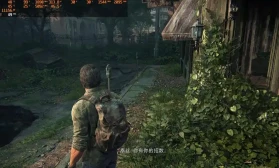Title: Deep Game News: Hidden Details Exposed

In the ever-evolving landscape of video games, surface-level reviews and mainstream news often capture the immediate: graphics, performance, and broad narrative strokes. However, a deeper stratum of storytelling exists, one woven not through cutscenes but through environmental clues, subtle audio cues, and meticulously placed assets. This is the domain of the deep game analyst, the digital archaeologist who unearths the hidden details developers embed for the truly observant. Today, we expose these layers, revealing how games like Elden Ring, Cyberpunk 2077, and indie darlings like Signalis communicate profound secrets to those willing to look closer.
The Environmental Narrative: Telling Stories Without Words
FromSoftware’s Elden Ring stands as a masterclass in environmental storytelling. The community’s relentless dissection of its world has become a cultural phenomenon. One of the most compelling hidden details lies in the architecture of Leyndell, Royal Capital. The entire city is structured around the Erdtree, but a closer inspection reveals a far older, buried city beneath its golden splendor. This isn't just for aesthetic variety; the architectural style of the submerged structures matches that of Farum Azula, the crumbling temple frozen in time. This single detail exposes a core truth of the game’s lore: Leyndell was built upon the ruins of a previous civilization, likely usurped by Queen Marika and the Golden Order. The environment itself becomes a timeline, visually charting the cycle of rise, conquest, and decay that is central to the game’s themes. It’s a story told in stone and ruin, completely missable if the player is solely focused on the next boss fight.
Similarly, the indie horror gem Signalis uses its brutalist, claustrophobic environments to convey its psychological terror. Players might notice recurring, specific patterns in the wallpaper or slight alterations in room layouts upon revisiting areas. These aren't glitches; they are deliberate design choices meant to evoke the protagonist’s deteriorating mental state and the looping, nightmare logic of the narrative. The hidden detail is the environment's instability, a direct reflection of the character's psyche.
Audio as a Hidden Guide: More Than Just a Score
Audio design is frequently praised for its ambiance, but its role in hiding crucial details is often understated. In Hellblade: Senua's Sacrifice, the pioneering use of binaural audio with the character's "Furies" (voices in her head) is well-known. However, a deeper listen reveals that these voices are not random. They often provide genuine, tactical gameplay cues. In combat, a voice might urgently whisper "behind you!" moments before an attack, or during a puzzle, their panicked muttering can sometimes hint at the solution. This transforms the audio from a purely narrative device into an integrated, functional game mechanic. The player is forced to learn, just as Senua does, to decipher which voices to trust, blurring the line between psychosis and survival instinct.
In a different vein, Cyberpunk 2077’s Phantom Liberty expansion hides a devastating secret in a song. Throughout the expansion, the melancholic tune "Who's Ready for Tomorrow" by Rat Boy & IBDY plays repeatedly. The lyrics, "I can't feel my face... Is this my last embrace?" are easily dismissed as dystopian background noise. Yet, this song is the literal key to one of the expansion's pivotal choices. A hidden, encrypted datashard found late in the game reveals the song is not just a song; it is a brainwashing tool, a cognitive weapon used by the FIA to program sleepers. The catchy tune you’ve been passively listening to for hours is suddenly recontextualized as a sinister instrument of control, dramatically altering the player's perception of key characters and the moral weight of their final decision.
The Language of Assets: Clues in the Details
Developers often hide clues in plain sight through the items and assets placed within the game world. The recent Alan Wake II is a treasure trove of such details. In the "Local Girl" saga chapter, players explore the Valhalla Nursing Home. Scattered throughout are flyers for a "Deerfest" celebration, posters of local cult members, and seemingly mundane letters. A dedicated player who cross-references the dates on these documents, the family trees sketched on whiteboards, and the timelines presented in the game's live-action segments can piece together the entire, tragic history of the Cult of the Tree and its connection to the town's founders long before the game explicitly reveals it. This turns gameplay into active detective work, rewarding scrutiny with profound narrative payoff.
Even older games continue to yield secrets. The modding community for The Elder Scrolls V: Skyrim recently uncovered unused dialogue and asset placements deep in the game's code that suggest a completely different, more complex relationship between the Falmer and the Nords was originally planned, hinting at a potential redemption arc or a more nuanced history for the enslaved Snow Elves that was ultimately streamlined for release.
Conclusion: The Reward for Scrutiny
The pursuit of these hidden details is more than a niche hobby; it represents a deeper engagement with the medium. It honors the incredible effort developers pour into every pixel, polygon, and sound wave. Games are not just played; they are read, listened to, and deciphered. In an age of bloated backlogs and rushed playthroughs, taking the time to absorb these hidden details exposes the true artistry of game design. It reveals a parallel narrative, a secret conversation between developer and player, waiting just beneath the surface for anyone willing to press their ear to the digital ground and listen closely.
Tags: #GameAnalysis #HiddenDetails #EldenRingLore #Cyberpunk2077 #EnvironmentalStorytelling #AudioDesign #GameDevelopment #IndieGames #GamingCommunity #DeepDive













